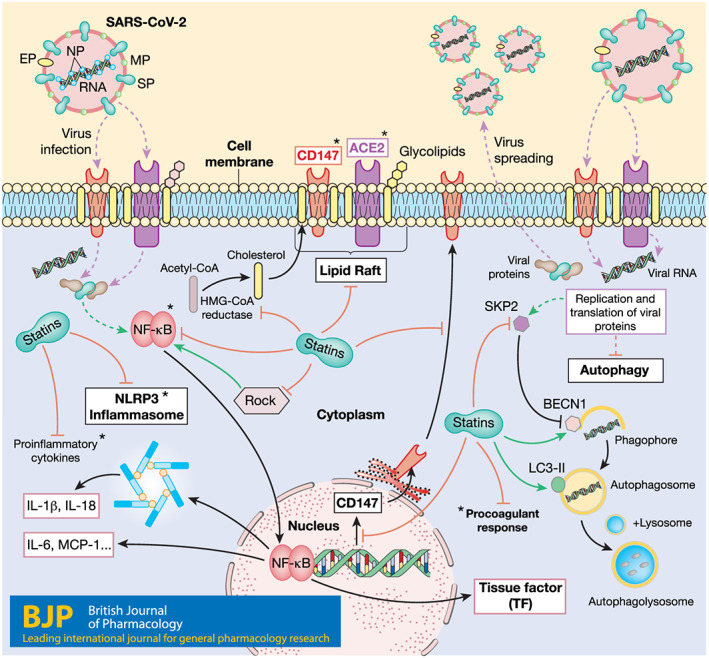FIGURE 2.

Schematic summary of SARS‐CoV‐2 entry into host cells, replication, effect on host cells, and postulated effects of statins. ACE2 and CD147 are located in the plasma membrane, associated with lipid rafts, and can act as SARS‐CoV‐2 receptors. Statins, by inhibiting cholesterol synthesis, can modify the composition of lipid rafts. Statins can also down‐regulate CD147 expression and its translocation to the cell surface. Autophagy in host cells is altered during SARS‐CoV‐2 infection, by a mechanism that involves SKP2 up‐regulation and subsequent BECN1 degradation. Statins decrease SKP2 levels and induce BECN1 and LC3 II synthesis, which trigger autophagy activation. Another process modulated by SARSCoV‐2 is the activation of the NF‐κB pathway leading to proinflammatory cytokine synthesis, including IL‐6, and NLRP3 inflammasome activation. Statins can down‐regulate NF‐κB pathway activation, proinflammatory cytokine synthesis, and NLRP3 inflammasome activation. Anti‐thrombotic effects of statins by TF modulation could also be beneficial in COVID‐19 patients. Purple, discontinuous lines: viral entry and release. Black lines: cell processes. Green lines: positive regulation of the process. Red lines: negative regulation of the process. Continuous green or red lines: process regulated by statins. Discontinuous green or red lines: process regulated by virus. Viral proteins: EP, envelope protein; NP, nucleocapsid protein; MP, membrane protein; SP: spike protein. *Targets of specific ongoing clinical trials against COVID‐19
